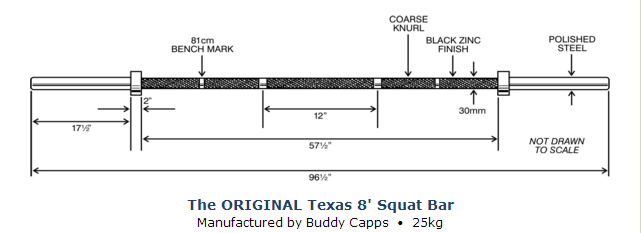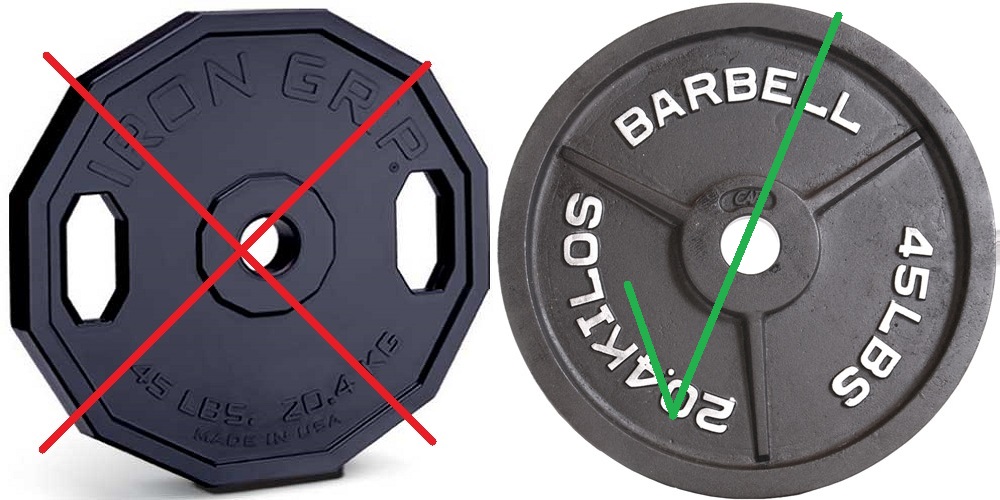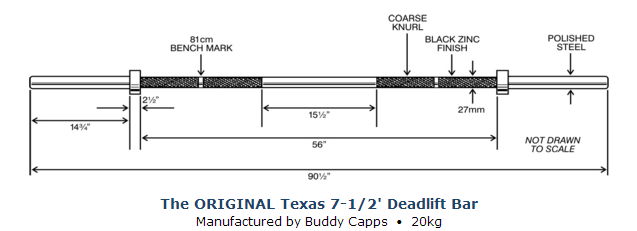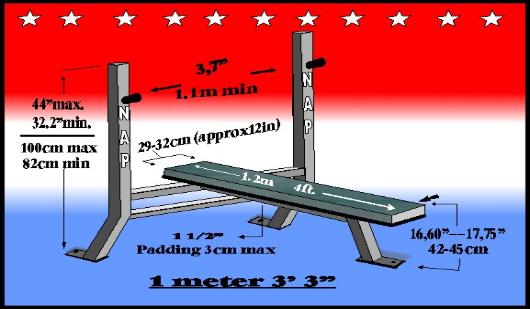The primary focus of this guide is the actual rules of Powerlifting Equipment. If you’re looking for powerlifting equipment recommendations, this isn’t necessarily the article for you. That said, if you are in the market for new equipment, it is virtually impossible to beat the combination of Anderson Powerlifting‘s prices and customer service. If there is any defect in your product whatsoever you will get a full replacement. GUARANTEED. Anderson is the best in the business.
Every lifter that is considering stepping on the platform needs to know the basic rules of powerlifting. Most organizations have remarkably similar rule sets, but I highly recommend that you find your particular organization’s rulebook anyways. You don’t want to have one of your lifts disqualified due to slight differences in the rules that you weren’t aware of. Consult my guide to powerlifting federations for starters.
For the rest of this guide, I will assume you are an IPF competitor. I’ll make notations regarding common exceptions in other federations, but, usually, if you comply with the IPF rules, you’ll comply with the rules anywhere. They tend to be the strictest powerlifting federation. You can find the actual IPF Rulebook here.
First of all, before you ever get to the point where you are signed up and ready for a meet, you should be cognizant of whether or not the equipment you train with is competition legal. Many people out there train in commercial gyms. You may be surprised to find out that the equipment that you’re using would not be acceptable at a meet.
Click here to skip to the bottom for a quick reference guide on legal equipment.
Powerlifting Plates
Let’s talk about plates briefly. Not only are typical, commercial gym “hex” plates a complete pain in the ass to deadlift with, they aren’t competition legal. Plates must be round. Competition plates are 45cm tall (~17.7″), weighted in kilos and calibrated to the nearest 10 grams. Round pound gym plates work well enough as approximations for training purposes.
Legal Powerlifting Bars
An IPF legal powerlifting bar will have all of the following specifications:
- Weight: 20kg or 44lbs
- Length: 2.2m or ~7’3”
- Diameter: 28-29mm
- Distance Between the Rings: 81cm or ~32 inches
Many powerlifting federations use different bars for the different lifts. Outside of the IPF, it isn’t
uncommon for federations to use one bar for squatting, one bar for benching, and yet another bar for deadlifting.
Squat Bars
For example, the “Texas Squat Bar” is used by many organizations for the squat.

Texas Squat Bar dimensions directly from the manufacturer.
Credit: http://www.wwfitness.com/powerlift.html
This bar is quite different from your standard IPF bar. For one, there is no break in the knurling whatsoever. It is designed this way to provide more grip on the lifters back. Instead of being just about 7’ long, this bar is 8’ long. For less flexible lifters, this allows them to take a wider grip. The Texas Squat Bar also has a 32mm diameter. This greatly increased thickness makes the bar much less likely to bend or “whip” coming out of the bottom of the squat.
Using this bar is completely different from an IPF competition bar. If you’re an IPF lifter, be sure to avoid using this bar in training because it will likely throw you off come meet day; you simply don’t get the same “bounce” out of the hole. If you compete outside of the IPF, be sure to check if your federation uses a similar bar. Speaking from experience, you’ll greatly benefit by using a squat bar at least once before your meet. This will really help you get used to the very different “feel” of it compared normal bars.
All About The Texas Squat Bar:
Deadlift Bars
Many federations make use of the “Deadlift Bar” which the IPF does not allow. Two types of deadlift bars are commonly used: The Texas Deadlift Bar and the Okie Deadlift Bar (designed by powerlifting legend Rickey Dale Crain). Because the Texas bars are so much more common, I’m going to be focusing on them.
The Texas Deadlift Bar is 7’6” long and has more distance between the collars than a normal bar. This allows for wider stances to be taken. The bar has no center knurl whatsoever to allow even the closest stance pullers to avoid scraping their shins. The bar also has particularly sharp knurling to enhance grip compared to other bars. However, the bar is particularly controversial because of its 27mm diameter. This relatively thin diameter makes the bar much more “bendy”. The bar often flexes several inches before leaving the ground.
The controversy arises because, historically, old school lifters didn’t have access to this bar and, typically speaking, people often can lift 25-50lbs more than they can with a normal bar. When records that were set on normal bars are broken by lifters using a deadlift bar, the comparison isn’t exactly apples to apples.
Many ask, “Is it fair to use a deadlift bar”? It doesn’t really matter. The IPF doesn’t allow them. If you compete elsewhere, you’ll have to see what your federation calls for. If they’re allowed, you’ll be using one on meet day. Just remember, if you’re trying to make comparisons, make sure to compare apples to apples.
All About The Texas Deadlift Bar:
If you’re interested in purchasing a Texas Deadlift Bar, is I said before, you can’t go wrong.
Squat Racks
Different federations also call for different types of racks to be used. The IPF universally uses squat stands. If you’re used to squatting in a power rack/cage, this will take a bit of an adjustment. You can’t push forward into squat stands quite the same way you can with a power cage.
Many federations allow the use of a monolift. Monolifts allow lifters to unrack the bar and squat without having to walk the weight back. You’ll have to check to see if your federations employs monolifts.
A Demonstration of the Monolift:
Powerlifting Benches
Lastly, I want to discuss competition legal benches. Many commercial gym benches do not have adjustable rack heights. Many commercial gym benches are too short and too thin. Let’s face it, many commercial gym benches just flat out suck. With that said, here are the specifications of a competition legal bench:
- Length: 1.22m or 48”
- Width: 29-32cm or 11.5”-12.5”
- Height: 42-45cm or 16.5”-17.5”
If you’re looking for a relatively cheap, but sturdy and competition legal bench, check out the Titan Flat Bench. When I lifted out of my garage, this is the bench I used with my cheap power rack. I loved it.
Best Place to Get Powerlifting Equipment
It used to be that Powerlifting Equipment was a highly specialized, niche concern. Nowadays, honestly, you can just log onto Amazon.com and find anything you need for the most part. I’d recommend starting there.
Legal Equipment Checklist
- Plates must be round and 45cm tall
- IPF Legal Competition Bar Specs: ~7’3” Long, 28-29mm thick, with 32” between the rings
- Some federations allow specialty bars for the squat and deadlift
- Squat Stands are used in the IPF, not Squat Racks
- Some Federations allow Monolifts
- Competition Legal Bench Specs: 48” Long, ~12” Wide, ~17” Tall
Like this Article? Subscribe to our Newsletter!
If you liked this articled, and you want instant updates whenever we put out new content, including exclusive subscriber articles and videos, sign up to our Newsletter!
Questions? Comments?
For all business and personal coaching services related inqueries, please contact me:
The Guide to Powerlifting Rules: Table of Contents
Part I: Powerlifting Equipment
Part II: Gear
Part III: The Squat
Part IV: The Bench
Part V: The Deadlift
Part VI: Powerlifting Federation Reference Guide
Bonus: How To Pick The Right Federation




The videos are great. It’s nice to see the comparisons between the different types of bars.